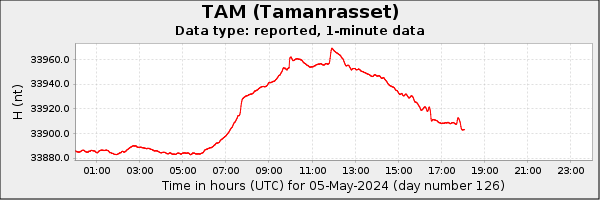For updates please scroll down towards the end of this article.
NOAA 3663 started to develop on 1 May. It consisted of 2 emerging bipolar regions that bumped into each other: the leading portion of the eastern ("left") region collided with the trailing portion of the nearby western region. A relatively large asymmetric spot in the middle of the group was created that contained a delta structure, i.e. 2 irregular spots of opposite magnetic polarity very close together (see the STCE SWx classification page for more information). This resulted in some M-class flaring and eventually in an X1.6 flare that peaked on 3 May at 02:22UTC. Imagery underneath shows a comparison in white light (left) and the corresponding magnetogram (right) as NOAA 3663 developed from 1 May onwards. In the magnetogram, white means magnetic field lines coming out of the Sun, and black means the field lines are returning towards the Sun. The next clip is an overlay of extreme ultraviolet images (SDO/AIA 131) over white light images, clearly showing the location of the flare over the delta structure. The blooming and diffraction patterns in the EUV images are image artefacts, not related to the flare - See this STCE newsitem for more info. The proton flux remained at background levels.


The eruption left its mark also in the radio wavelengths. Radio bursts were recorded at all observed radio frequencies, but were prominently present at 245 MHz and 410 MHz (NOAA/USAF). A Tenflare (doubling of the pre-event flux) in the 10.7cm radio flux was observed (550 sfu). The NOAA/USAF network reported also a Type II radio burst, usually an indication that the eruption was associated with a coronal mass ejection (CME). The radio spectrogram underneath was obtained by the e-Callisto station of the Astronomical Society of South Australia (Australia/ASSA) and shows the radio disturbance around 02:20UTC.
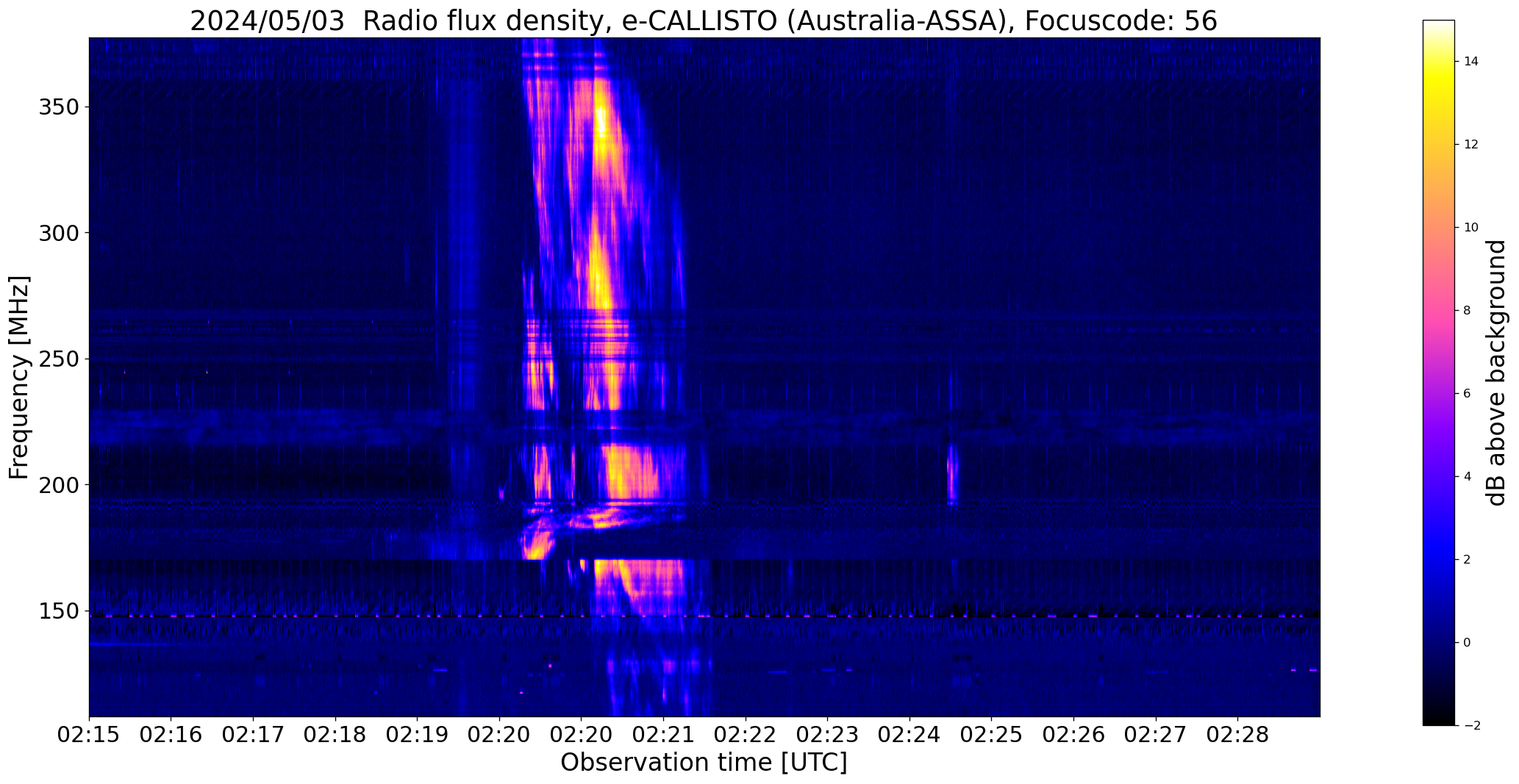
A CME was observed in LASCO C2 images by CACTus starting at 02:48UTC. In view of its width (about 135 degrees, assuming this is not a combination of several smaller CMEs) and the position of the source region, it is likely that this CME has an earth-directed component. Further analysis is being done by the SIDC space weather forecaster and can be found on the dedicated SIDC website. The clip underneath has SUVI 304 images overlaid on the LASCO C2 images. A clip with difference images (i.e. one image subtracted from the next) can be found here.
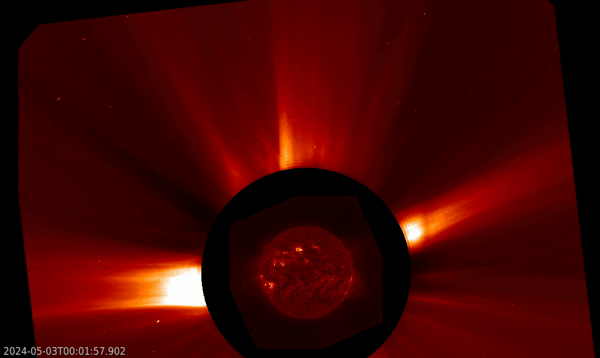
This X-class event affected High Frequency (HF) communications over the western portion of the Pacific Ocean, Australia, Southeast Asia, China and Japan (D-RAP). An advisory for disturbed HF Com has been sent by ACFJ (consortium of Australia, Canada, France and Japan) to the civil aviation through PECASUS. Other HF Com advisories have also been sent by ACFJ due to post-storm depressions (unavailability of the higher frequencies in HF) as a result of the strong (Kp = 7-) geomagnetic storm that took place yesterday 2 May (GFZ Potsdam). No other obvious space weather impacts have been observed. Further strong flaring from NOAA 3663 can be expected as long as the potent magnetic delta structure remains present (3 May - 07:15UTC).

UPDATES
UPDATE 05 May at 08:00UTC - NOAA 3663 produced another X-class flare peaking at 06:01UTC on 5 May. The flare was very similar in intensity (X1.3) and affected radio frequencies as the 3 May X-class flare. However, no Type II radioburst was detected and no substantial coronal dimming seems to have been observed (Solar Demon). Standing-By coronagraphic images and further analysis by the SIDC forecaster. The proton flux remained at background levels, despite the region now being located 20 degrees West.
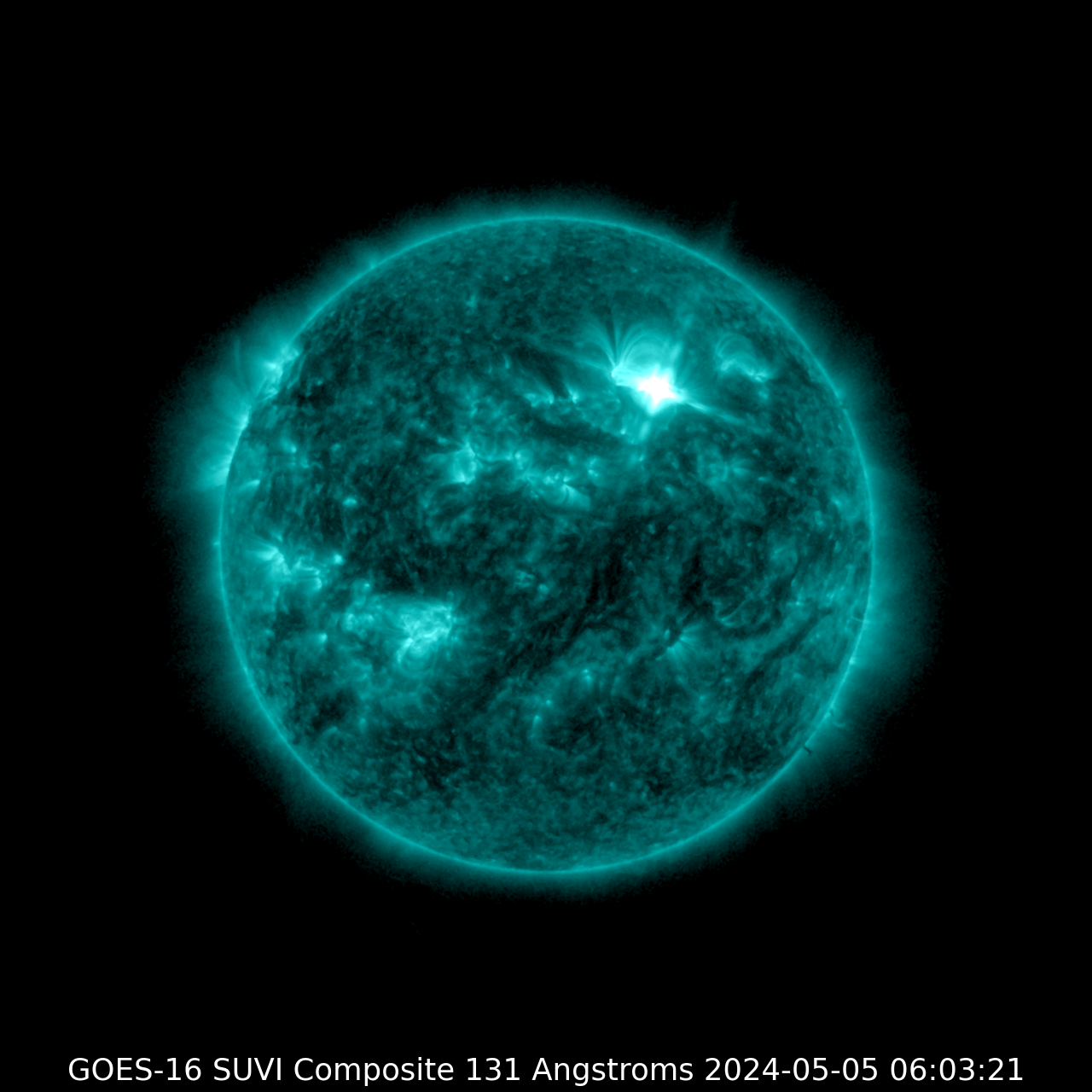
This X-class event affected High Frequency (HF) communications over the western portion of Australia, Southeast Asia, China, Japan, Russia, India, the Arabian peninsula and East-Africa (D-RAP ; Map). An advisory for disturbed HF Com has been sent by ACFJ (consortium of Australia, Canada, France and Japan) to the civil aviation through PECASUS. Magnetometer stations in India and Russia (Intermagnet (BGS)) recorded a small and brief solar flare effect of 8-10 nT. Further strong flaring from NOAA 3663 can be expected as long as the potent magnetic delta structure remains present.
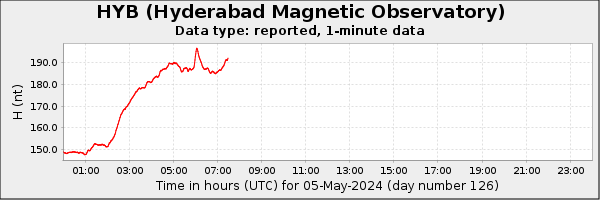
UPDATE 05 May at 19:00UTC - NOAA 3663 produced another X-class flare peaking at 11:54UTC on 5 May. The X1.2 flare was associated with radio bursts at super high frequencies (8.8 and 15.4 GHz). No Type II radio burst was reported by the NOAA/USAF network nor observed by the Humain Radioastronomy Station (spectrogram) , though some coronal dimming, a weak coronal wave (to the north) and post-eruption coronal loops are evident in SDO imagery (Solar Demon), suggesting a narrow CME is possible. Unfortunately, SOHO coronagraphs are out since 4 May, and STEREO-A coronagraphic imagery is absent after noon on 5 May. Standing-by coronagraphic images and further analysis by the SIDC forecaster. The proton flux remained at background levels.
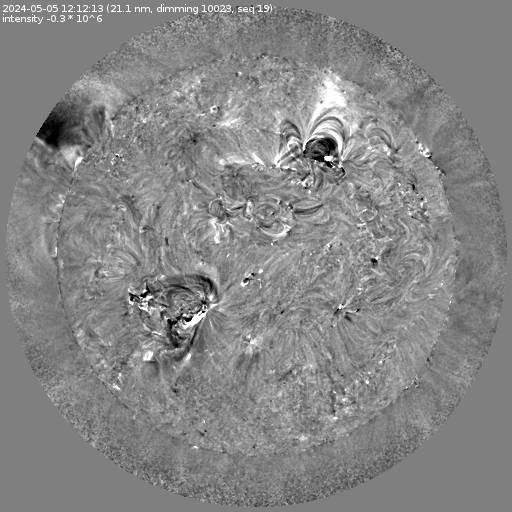
This X-class event affected High Frequency (HF) communications over the eastern portion of South-America, Europe, and the Arabian peninsula (D-RAP ; Map). An advisory for disturbed HF Com has been sent by ACFJ (consortium of Australia, Canada, France and Japan) to the civil aviation through PECASUS. Magnetometer stations in Europe (incl. Dourbes) and Africa (Intermagnet (BGS)) recorded a solar flare effect of 8-13 nT. Further strong flaring from NOAA 3663 can be expected as long as the potent magnetic delta structure remains present. NOAA 3664 also has a delta structure, but has remained relatively flare-calm so far.
